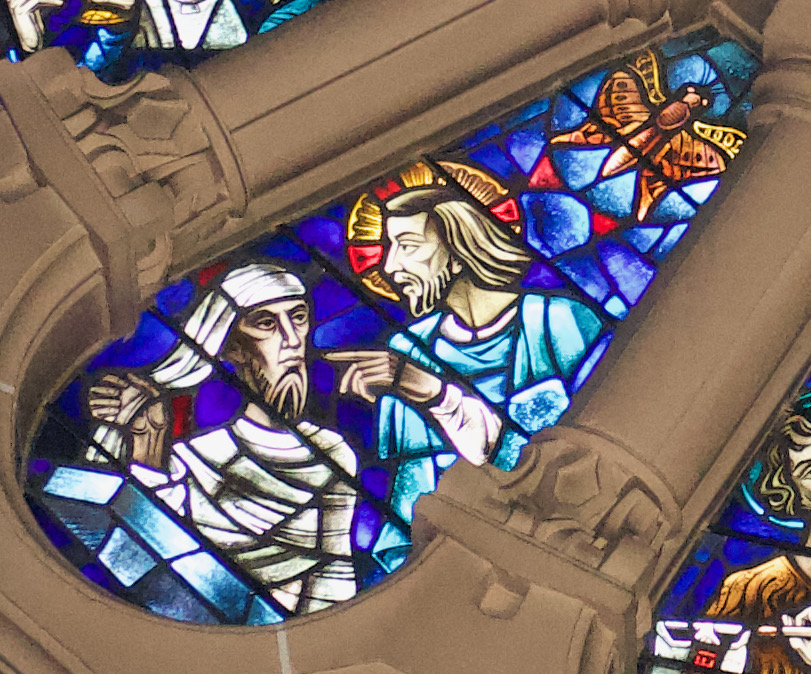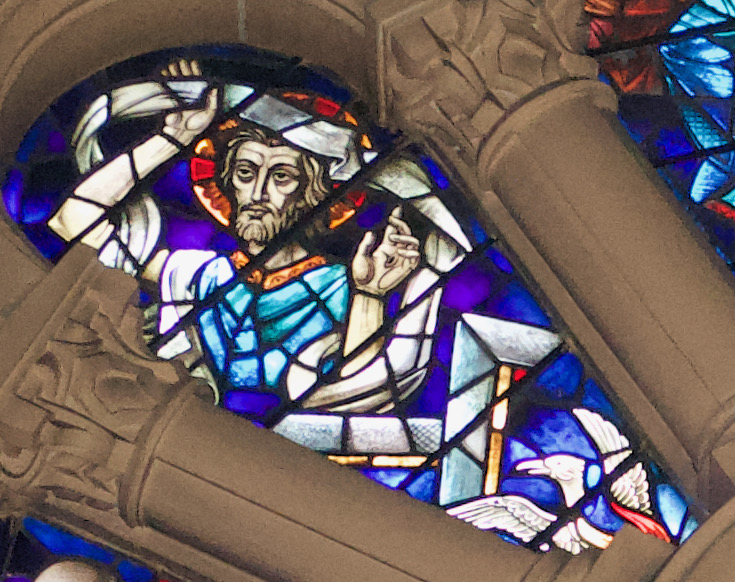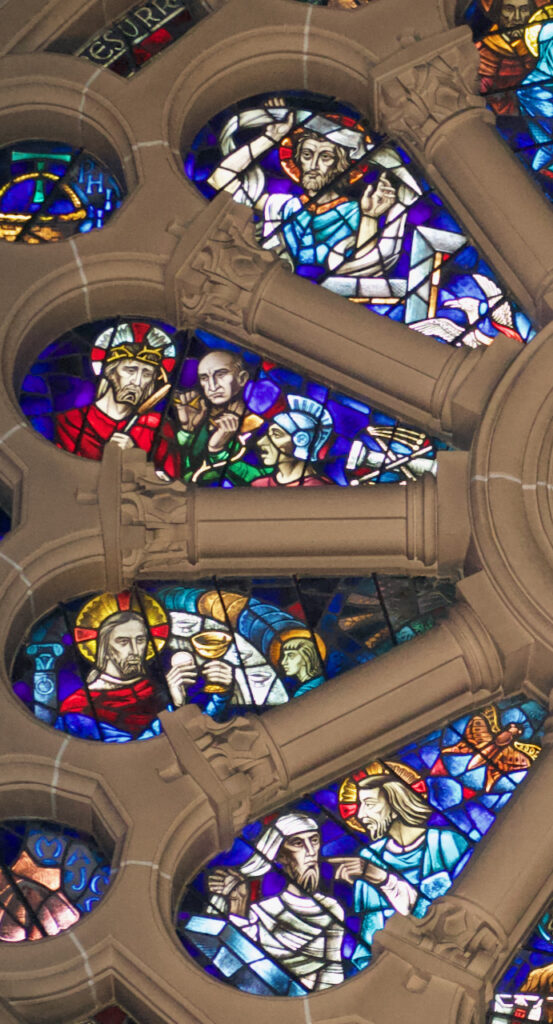
In reading Scripture, some passages foreshadow the Passion and Resurrection of Jesus. The raising of Lazarus (Jn 11: 1- 45) is one such passage. Panes illustrating the raising of Lazarus and the Resurrection of Jesus come before and after the Holy Week panes in the God the Son rose window. There are strong connections in the composition of these two panes.
Lazarus, the brother of Martha and Mary, had died and been buried. Word was sent to Jesus, but he arrived four days after Lazarus’ death. Jesus loved Lazarus, and Martha and Mary expressed to Him their faith that if He had been there, Lazarus would not have died. In this pane, Jesus has thanked his Father for always hearing Him and is commanding Lazarus to “come out” of the tomb. He is dressed in blue, a symbol of His divinity. His left hand gestures his command. Lazarus is wrapped in the burial cloth and is pulling it off his head and face as he emerges from the angular structure of the tomb. The butterfly in the inner corner of the pane is a symbol of resurrection and new life.
The Resurrection of Jesus is in the pane above the two illustrations of Holy Week. It depicts Jesus also emerging from the angular structure of the tomb. He is pulling the burial cloth from his head and face with the same hand motion as Lazarus. The flow of the cloth suggests the power and energy of this moment. His left hand now clearly bears the mark of the nail. Jesus raised Lazarus to life, but he would die again. Jesus was raised in a glorified body, to eternal life. The nail mark in his hand reminds us that we, also, are heirs to the eternal life that He won for us upon the cross.
“I am the resurrection and the life: whoever believes in me, though he should die, will come to life; and whoever is alive and believes in me will never die.” (Jn 11:26)
The phoenix rising out of the flames in the inner corner of this pane is a symbol of the new life that we have in Christ. During this Easter season may we rejoice in the Resurrection of the Lord: Jesus’ triumph over sin and death.

